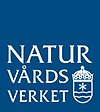
Topic 1 - Clean Air in Cities
Background
Exposure to air pollutants such as Particulate Matter (PM), nitrogen dioxide (NO2) and ozone (O3) is an ongoing threat to public health. Over 80% of the population of European cities is exposed to annual PM2.5 concentrations that exceed the WHO air quality guideline concentrations. Despite large efforts to bring down atmospheric concentrations and improvements over the last decade, air quality is far from reaching the standards. To improve their air quality, many cities take measures to reduce local emissions. Regional and transboundary air pollution will for many cities give a significant (sometimes dominant) contribution, in particular with respect to fine particulates (PM2.5). As a result of this, air quality in many cities can’t be reached only with local measures. Future strategies on air pollution will therefore need both local and regional/international measures.
Even if the Convention on Long-Range Transboundary Air Pollution has as its main objective to consider transboundary air pollution, it has become increasingly evident that its strategies need to take into account the air quality in urban areas, in particular since the main focus has turned from ecosystems to human health.
Objective
The objective of this working group is to further assess the interlinkages between urban and regional air pollution and how local, national and international policies may interact in order to maximize the overall health benefits. In order to come up with effective measures and to increase the feasibility and hence changes of actual implementation, strategies that tackle air quality problems showing synergies with one or more of the other urban challenges they face (such as climate and mobility) should be considered. The outcome is expected to result in a number of recommendations on how cities and international bodies (CLRTAP, EU etc.) could increase its collaboration to meat air quality guidelines in the most cost-efficient way.
Issues to discuss
Bridging the geographical scales requires the development of new scientific and policy frameworks, mainly to be able to predict the effects for human exposure and ecosystems from potential measures. The Convention has an important role to play in their definition, not at least as the Convention has a strong scientific network being able to assess options, effects and co-benefits.
A number of questions will be reviewed in the session such as:
- What pollutants are the most urgent to tackle in order to reduce exposure to harmful concentrations of pollution in cities and to protect citizens?
- How to quantify the impact of long-range transport in cities?
- Do we know the contribution of the cities to background air pollutant concentrations in Europe? Which tools should be developed in the future for quantifying this impact?
- What local measures can be taken to reduce air pollution levels in cities and what are co-benefits for both other environmental issues as well as for the regional situation.
- What measures can be taken outside cities (regional, national, international) to reduce air pollution levels in cities and what are their cost-efficiencies? What are the co-benefits for both other environmental issues as well as for the regional situation?
- Is it possible to rank local, national, and sector control measures according to their efficiency? And how may climate change measures influence the priorities?
- What are the main governance issues for bridging the scales? Are they significantly different from one country to another?
- Is it possible to highlight a set of local, national, sector measures that can support a win-win strategy? Are there some measures that should be avoided because of their lack of efficiency (compared to their cost)?
- Which role can be played by the Convention to help in developing local air quality strategies and improving air quality at the city level (tools, strategy?)?
Potential participants: Both technical and policy experts from the Convention and national and city experts, European Commission, organizations such as Eurocities, HEAL, Urban Partnership, Covenant of Mayors, Committee of the regions, WHO …
Contact persons: Laurence Rouil, INERIS, laurence.rouil@ineris.fr and Roald Wolters, European Commission, Roald.WOLTERS@ec.europa.eu
Outcome of Working Group discussions
Presentation at the Wednesday plenary session
WG1 outcome Clean air in cities.pdf Pdf, 384 kB.
Report from Topic 1 Clean Air for the Cities
Agenda
Background documents
(NORTRIP) Road dust and PM10 in the Nordic countries
Measures to Reduce Road Dust Emissions from Traffic
http://norden.diva-portal.org/smash/record.jsf?pid=diva2%3A1069152&dswid=-7615
CO2 emissions and economic incentives
Recent developments in CO2 emissions from passenger cars in the Nordic countries and potential economic incentives to regulate them
http://norden.diva-portal.org/smash/record.jsf?pid=diva2%3A1096156&dswid=-4162
| Updated:
The website is administrated by IVL Swedish Environmental Research Insitute Ltd | © IVL

